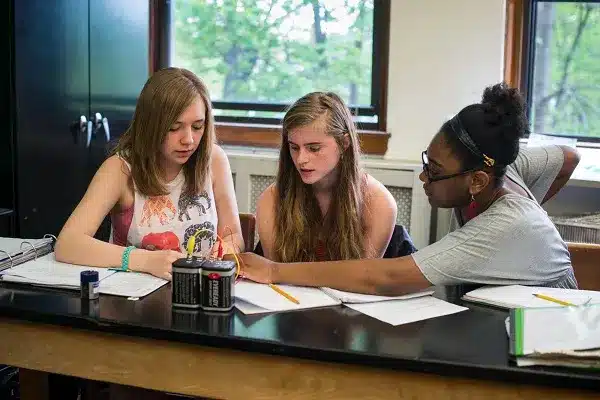A three-year-old talks to grandma on Skype. A seven-year-old reads a fairy-tale with Dad on a Kindle. A child with spatial-awareness issues plays Tetris.
Is this okay? Good, even? Would something else be . . . better?
After 15 to 20 years of scientific research on media use (in its ever changing forms), we have very specific and yet somehow less conclusive results than one might imagine.
Here’s what we do know. We know media use in children can lead to sleep problems, poorer self regulation, lower grades and personal contentment levels, increased hostility, anxiety, obesity, and depression. It also changes brain structure in a way that could feed addiction. Those who are labeled as addicted to media also suffer notable brain structure changes. And we’ve recently learned that cognitive control in media multi-taskers falters compared to multi-tasking amongst less media immersed peers. This correlates nicely with this study showing a one-third decline in attention spans thanks to our media-heavy world.
But is it all bad? Studies say that some forms of technology have been found to maintain or enhance relationships, help girls feel more connected to their parents, and help dyslexia, just to name a few.
So what’s the verdict? The American Academy of Pediatrics used to recommend total screen abstinence for children younger than 2, but as of September 2015, their stance has changed because, as they say, “In a world where “screen time” is becoming simply “time,” our policies must evolve or become obsolete.” Now, they recommend a series of tips for managing this ever growing quagmire of options.
Regardless of the negatives and positives that seem to emerge daily around the tech debate, the heart of the issue for many social scientists, pediatricians, and educators is ultimately about what our children are NOT DOING any longer.
What has been replaced by the average 7.5 hours A DAY of media time? We know this answer — many very valuable things with proven, high-level cognitive benefits like free play, time outside, boredom, and face-to-face communication with family and peers.
From Development to the Classroom
While initial results for tech in the classroom were hopeful, scientific study results from full implementation of these efforts are downright dismal.
The Organization for Economic Cooperation and Development released a comprehensive study this fall, Students, Computers and Learning, which found, “Use of computers does not seem to be a prominent factor in explaining the variation in student performance in math, reading, or science. Most countries that invested heavily in education related IT equipment did not witness an appreciable improvement in student achievement over the past 10 years.”
Not only is tech in school not helping, it’s actually hurting student performance. The same study found that those students with the most tech access, had “significantly lower test score results” than those with some or none.
Does it come down to teachers not knowing how to use it? Is it more about the companies pushing the tech than the real curriculum behind it?
The fact is, technology may occasionally provide a positive application for learning, but those same positives can be accomplished by more well-established, non-tech means. Waldorf educators see so many proven opportunities to boost learning in the classroom, through non-tech methods — music training, play, outdoor education, handwriting, art — that we ask, why is tech in the classroom being deemed necessary at all?
Many parents, even those in Silicon Valley, are shelving this debate in favor of the time tested methods and results of non-tech education for children. As Google Executive, Alan Eagle, stated in the New York Times article, A Silicon Valley School That Doesn’t Compute:
“I fundamentally reject the notion you need technology aids in grammar school. The idea that an app on an iPad can better teach my kids to read or do arithmetic, that’s ridiculous.”
When Waldorf educators consider what children must learn to thrive in a technological society, we argue that the mechanics of learning to use any given device is irrelevant, especially considering that passing time quickly makes it irrelevant. We need students who can innovate and learn ANY skill quickly. We need students that can connect parts to whole thinking, properly deduce and problem solve, understand mathematical and algebraic concepts. And there are a plethora of superior, proven, offline options available to teach these crucial skills.
Ultimately, the scientific research is still pouring in and thus far the jury is “still out” on the cumulative effects media use has on our children and our learning culture. Waldorf educators simply say: it can all wait. Develop the child’s curiosity, imagination and critical thinking through a rich, multidisciplinary curriculum. Engage their heads, hands, and hearts by immersing them in our scientifically proven and results driven education.
Photo credit: Waldorf High School of Massachusetts Bay





